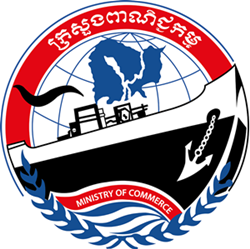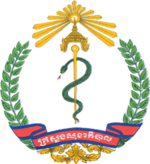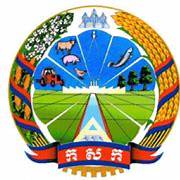Issue Description
The Royal Government of Cambodia (RGC) has demonstrated a willingness to engage in foreign trade, as evidenced by the formulation of a long-term national trade strategy and its participation in various trade agreements. Cambodia’s Trade Integration Strategy Update (CTISU) 2019-2023 aims to ensure that the benefits of international trade continue to drive Cambodia’s rise away from Least Developed Country status and into middle income status, in the process upgrading its positions in the global and regional supply chains. In 2022, Cambodia exported products for a total value of USD 20.5 billion, and its imports were worth USD 29.9 billion.
A key component of the RGC’s trade strategy has been its adhesion to new trade agreements. The multilateral Regional Comprehensive Economic Partnership (RCEP) was signed in 2020. RCEP now constitutes the world’s largest trading bloc, comprising 10 ASEAN members (including Cambodia) and five other regional partners: Australia, China, Japan, India, Korea. It encompasses a population of 2.2 billion people (30% of the world) and USD 38.8 trillion (30% of the world’s GDP). The purpose of RCEP is to establish a modern, comprehensive, high-quality, and mutually beneficial economic partnership that will facilitate the expansion of regional trade and investment and contribute to global economic growth and development. By signing it, countries commit to open regionalism and global trade.
The benefits of RCEP are not so much on tariff reduction but on non-tariff measures to improve market access, such as commitments to simplify and harmonise Rules of Origin and its thresholds, simplify import-export procedures, remove barriers to trade and review phytosanitary standards. RCEP will indeed reduce or eliminate import tariffs on most industrial products, encompassing about 92% of all products across multiple key tariff classification codes. Still, since as many as 86 to 90% of categories of goods covered by RCEP already qualify for tariff elimination under existing ASEAN Free Trade Agreements (FTAs) with Dialogue Partners, RCEP will improve market access but not necessarily imply large tariff reductions for all parties.
For its part, Cambodia has received good trade preferences for its products under RCEP, which cover:
- Agricultural products, such as cashew nuts, maize, coconut, fresh mango, and banana;
- Processed agricultural goods including noodles, cakes, fish processing goods, cassava flour, package noodles, etc;
- Industrial goods including bicycles, garments, footwear, electronic components, electrical cables, etc.
Despite its active trade agenda, challenges for Cambodia lie ahead, which put into question the future sustainability of the country’s position in the world economy.
Cambodia’s export-oriented economy suffers from low diversification, both in terms of export sectors and destination markets. Sector-wise, most of the export revenue comes from garments and footwear. There has been in recent years a small shift towards higher value-added products in components and transport, but not enough yet to upset the main trend. In terms of geography, Cambodia still heavily relies on exports to the European Union and the USA, destinations which allow preferential trading conditions to the country under preferential trading schemes.
As much as these schemes allowed Cambodia’s export sector to grow and thrive in the last 10-15 years, helping develop the economy, in a few years Cambodia will graduate from LDC status to become a middle-income country, meaning it will suddenly lose most of the preferential trading conditions to key export markets. This is because existing trading schemes for the most part do not plan a transition period for Cambodian exports.
In practical terms, this means that in only a few years, unless conditions change, a substantial share of products exported from Cambodia to key export markets will see price hikes in accordance with higher costs due to new import tariffs that will kick in. Such added costs (assuming these will be absorbed by producers rather than end consumers) seriously jeopardise the competitiveness of Cambodia’s export industries, and require urgent action in the trade negotiation sphere from the RGC.
The RGC needs to implement an alternative trade agenda that can absorb the expected loss of trade preferences in key export markets.
Focusing on the most immediate opportunities, Cambodia has signed the RCEP but has still to implement most of its commitments under the agreement. These commitments make up several hundred pages of documents, including those relating to:
- Chapter 2 (Trade in Goods);
- Chapter 3 (Rules of Origin);
- Chapter 4 (Customs procedures and trade facilitation);
- Chapter 5 (Sanitary and Phytosanitary measures);
- Chapter 8 (Trade in Services);
- Chapter 12 (E-commerce).
Additionally, the RGC has to ensure in future bilateral and multilateral discussions with RCEP members that they also commit to implementing their share of agreements, as these commitments by foreign governments in key prospective markets – eg. Korea, China – will determine the outcome of enhanced market access for Cambodian exports.
Impact on business
The absence of an alternative trade negotiation agenda to one relying on preferential trading schemes to carry the export economy seriously risks undermining Cambodia’s current high levels of economic growth and development. Having no comprehensive trading alternative once Cambodia becomes a middle-income country, risks suddenly making a significant share of the country’s export industries uncompetitive as suppliers of products such as garment and footwear.
Producers in these sectors will consider leaving the country and transporting their factories over to other countries, either those still enjoying LDC status (eg. Myanmar) or to other more mature economies (eg. Vietnam). The loss of these industries would be a significant blow to Cambodia’s ambitions of scaling up the global value chains and risks setting the country back for years to come.
Recommendation
- Implement measures to maximise the potential of RCEP.
We therefore put forward to the MoC and other line ministries, a comprehensive set of measures to maximise the potential of RCEP across three levels.
Firstly, on the most basic level, we recommend that the RGC accelerate the implementation of its RCEP commitments, particularly those relating to the chapters of the agreement listed above.
Secondly, we recommend that the RGC push for its RCEP counterparts to also speed up their share of RCEP commitments, particularly in key priority markets, and that particular attention be devoted towards obtaining a reduction in Non-tariff Measures (NTMs) from China (the country has the highest number of NTMs obstructing market access for Cambodian exports, especially agricultural produce, mostly in TBT, SPS and export measures). The RGC can capitalise on its reputation as one of the countries with the lowest number of NTMs to ensure as close a reciprocal treatment can be obtained from its partners;
Thirdly, to enhance the long-term attractiveness of its export products and to help upgrade the country’s position in global and regional value chains, we have the following sectoral recommendations:
- For the garment sector: promote structural changes. RCEP can bring structural transformation to the Cambodian economy, particularly its export sector, towards higher value-added manufacturing in global value chains. As long as the trade agenda is accompanied by structural reforms, it will diversify garment and textile manufacturing away from simple, labour-intensive “cut, make and trim” and into more functional services such as branding, marketing and sourcing, allowing Cambodia to move up the value chains;
- For the agricultural sector: develop opportunities in agri-processing, production and exports. Upscale GVC activities in branding, marketing, warehousing, storage, that allow movement of products to key destinations, as well as manufacturing and processing. Invest in Agri-Industrial Parks. Work on export certifications. Work with other ASEAN LDCs to raise concern over SPS measures applied by China on agri-exports, develop a negotiating strategy with ASEAN LDCs to enhance RCEP provisions on SPS contain WTO-plus elements that can facilitate market access to China;
- For the light manufacturing sector: attract higher value-added activities. Despite rising export competitiveness of computers, electronic/electrical products, machinery parts and components, and transport equipment, Cambodia’s upward shift in Global Value Chains has been moderate. The RGC should attract more multinational and GVC activities in these industries, taking advantage of a single RoO framework and less complicated RoO;
- Cross-sectoral: Strengthen competitiveness and linkages of SEZs to GVC activities to attract multinational activities, updating them to higher value-added activities;
- For the digital services sector: separate recommendation, see below.
The sheer scope of the RCEP promises to offer Cambodia much larger benefits than current preferential trading schemes and individual trade agreements, besides cutting down on administrative requirements such as performance requirements and conditional rules.
According to a 2022 study by the Economic Research Institute for ASEAN and East Asia, if implemented correctly (including through some of the measures mentioned above), RCEP could ramp up Cambodia’s exports by between +9.4% and 18% annually. A scenario with 9.4% more annual growth could increase GDP by 2% and employment by 3.2% as well; an 18% growth scenario could increase GDP by 3.8% and employment by 6.2%. As a side note, RCEP also offers the potential for European and other foreign companies originating outside of RCEP countries to take advantage of preferential RoOs to install manufacturing plants in Cambodia and qualify their products as originating from Cambodia. This trend would see a further boost to FDI in the country.
Royal government of Cambodia
Initiative from Eurocham: The issue has been raised by the Tax Committee within The White Book edition 2024 in the Recommendation No. 10.

National Counterparts

Ministry of Commerce

General Department of Customs and Excise

Ministry of Health

Ministry of Agriculture, Forestry and Fisheries

Ministry of Industry, Science, Technology and Innovation

